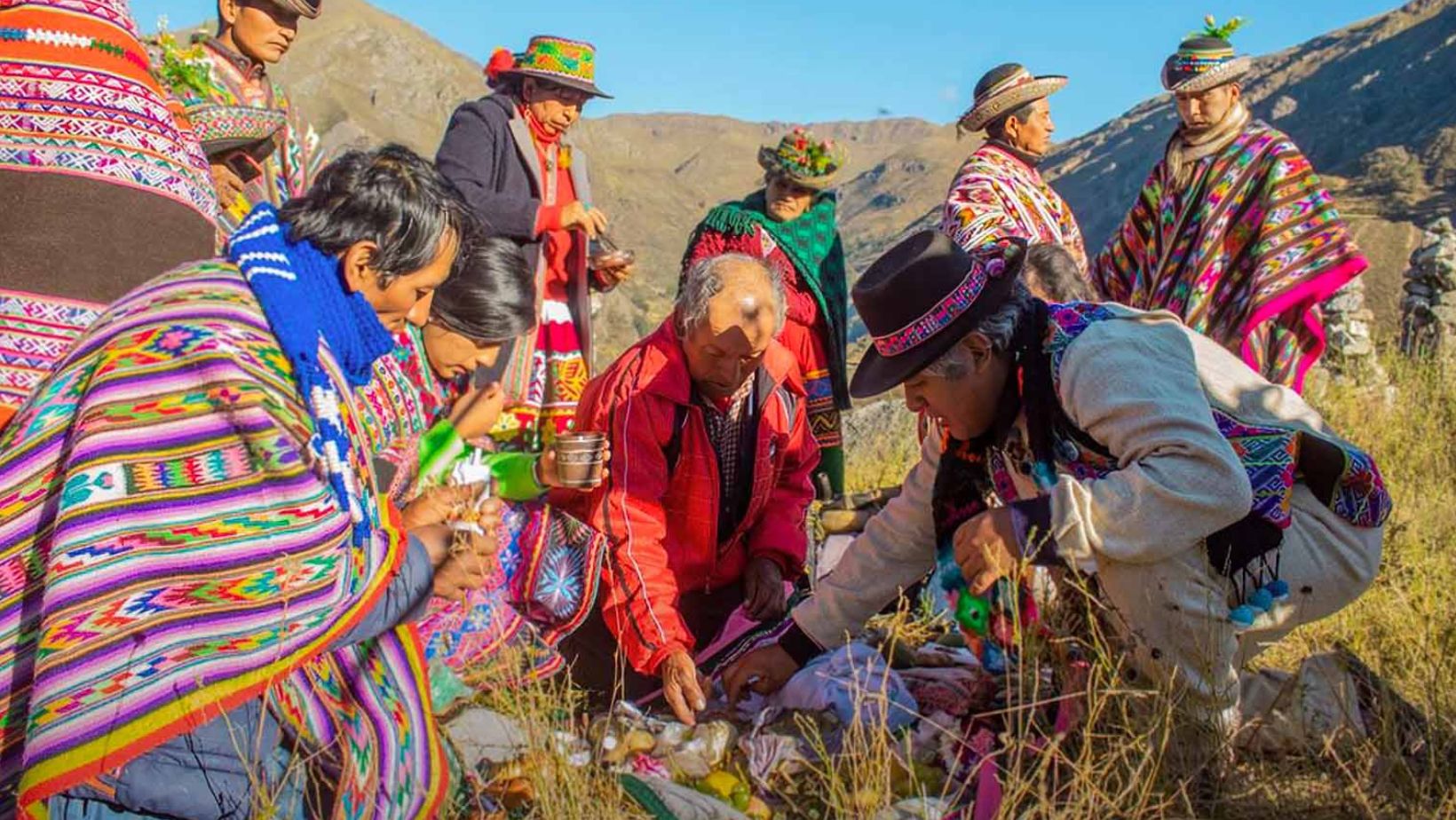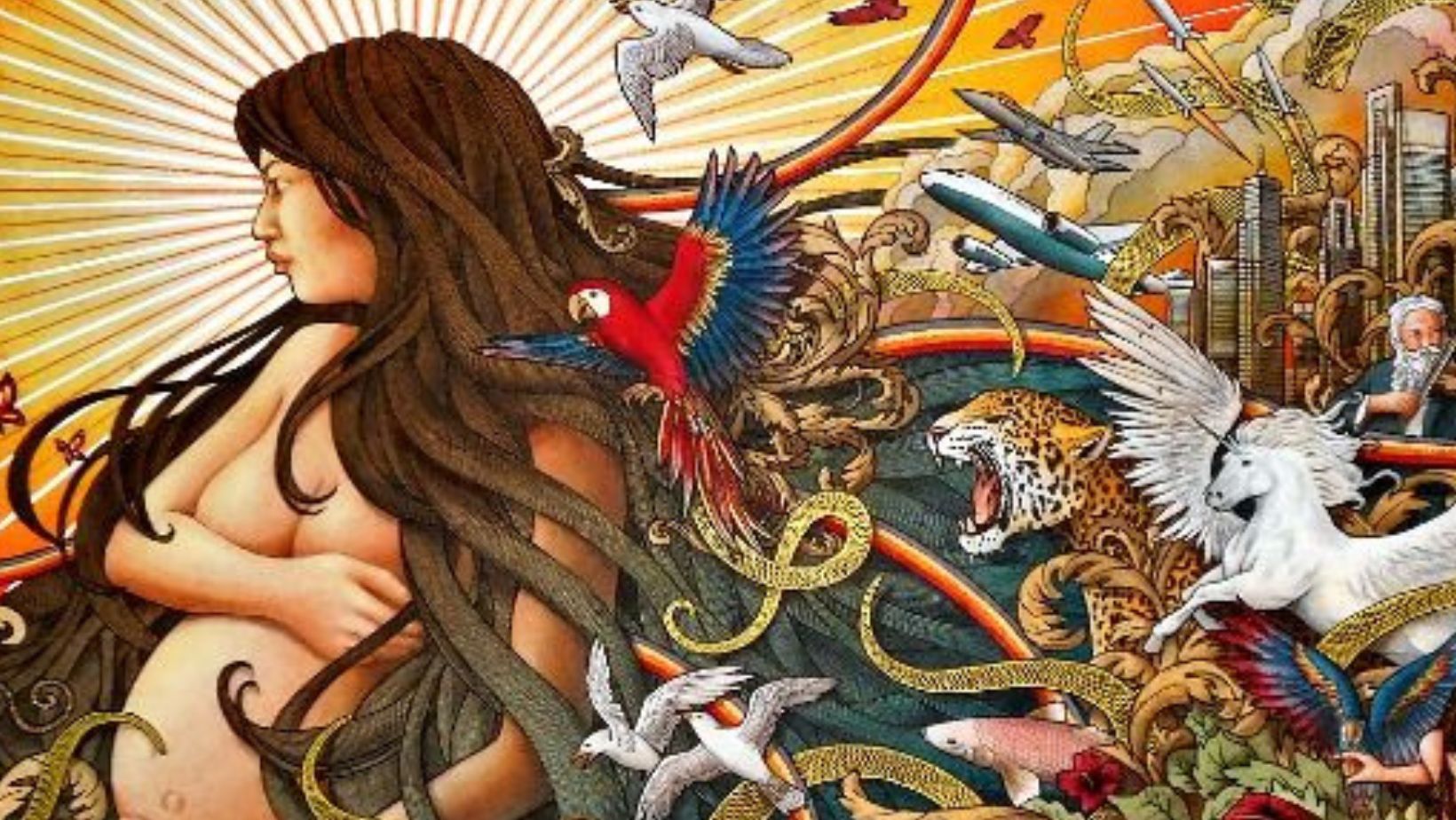Mama Pacha, the Earth Mother of Andean beliefs. Revered for her nurturing spirit, she embodies the very essence of life and sustenance. In Inca mythology, She holds a vital place, symbolizing fertility, agriculture, and the rhythms of nature. Her connection to the earth is profound; she is seen as the source of all crops and the protector of the land. As we explore her significance, you’ll discover how she influences not just ancient rituals but also modern practices. Join us on this journey into the heart of Andean culture and the legacy of Mama Pacha!
Historical Context of Andean Beliefs

The Andean civilizations, including the Incas, thrived in South America for thousands of years. The Incas, who emerged in the early 15th century, built a vast empire stretching from modern-day Colombia to Chile. Their society was complex, with advanced agricultural techniques, sophisticated architecture, and intricate road systems. These innovations allowed them to flourish in the challenging mountainous terrain. Mythology played a crucial role in shaping Andean culture and societal values. Stories of gods and goddesses, like Mama Pacha, were woven into everyday life, guiding people’s actions and beliefs. Myths explained natural phenomena, agricultural cycles, and human existence, providing a framework for understanding the world. Rituals and ceremonies were essential for maintaining harmony with the gods. These practices reinforced community bonds and underscored the importance of agriculture and fertility. The Incas believed that honoring their deities ensured prosperity and a bountiful harvest. In summary, the history of Andean civilizations, particularly the Incas, reveals a deep connection between mythology and daily life. This relationship laid the foundation for their enduring beliefs, shaping their culture and identity.
Mama Pacha: The Earth Mother
She revered as the Earth Mother in Andean mythology. She symbolizes fertility, nurturing, and the cycles of life. Often depicted as a woman adorned with crops and flowers, her imagery reflects the bounty of the earth. Her name translates to “Mother Earth,” highlighting her role as a provider and protector. She is intrinsically linked to agriculture. The Incas believed she controlled the land’s fertility and the growth of crops. Farmers would honor her through rituals and offerings, seeking her blessings for a prosperous harvest. Her presence in daily life underscored the importance of agriculture in sustaining the community. Additionally, She represents sustenance and nourishment. She embodies the earth’s ability to provide food, water, and shelter for all living beings. Her teachings encourage respect for the land and its resources, emphasizing the interconnectedness of life. Overall, Mama Pacha’s attributes and symbolism highlight her vital role in Andean culture. She is not just a deity but a vital force that shapes the landscape of life, reinforcing the importance of agriculture and fertility.
Comparative Analysis: Mama Pacha and Other Earth Deities
Mama Pacha shares similarities with other earth mother deities worldwide. Like Gaia in Greek mythology, she represents fertility and the nurturing aspects of nature. Both deities symbolize the life-giving qualities of the earth and its resources. Additionally, they emphasize the connection between humans and the environment. However, there are notable differences. Mama Pacha is specifically tied to the agricultural practices of the Andes, reflecting the unique challenges of mountainous terrain. In contrast, deities like Demeter in Greek mythology focus more on specific crops, such as grains. This highlights how regional contexts shape the characteristics of these earth mother figures. Mama Pacha’s influence extends beyond mythology into daily life in Andean cultures. Her presence is felt in agricultural rituals and seasonal celebrations, reinforcing community bonds. This influence is evident in how local communities express gratitude for harvests and the earth’s resources. In summary, Mama Pacha’s attributes resonate with other earth deities, yet her significance is deeply rooted in Andean culture. She embodies the unique relationship between the people and their environment, showcasing the diverse interpretations of earth mother figures across the globe.
Mama Pacha in Inca Mythology

Mama Pacha is central to many key myths in Inca mythology. One significant story involves her creation of the earth and all living things. According to legend, she formed the mountains, valleys, and rivers, giving life to plants and animals. This act of creation establishes her as the foundation of life in the Andean world. Mama Pacha also has a close relationship with Inti, the Sun God. Inti is considered her partner, and together, they symbolize the balance of nature. While Mama Pacha nurtures the earth, Inti provides warmth and light, essential for growth. This complementary relationship underscores the importance of both deities in sustaining life. Another myth describes how Mama Pacha taught the Incas agricultural practices. She showed them how to cultivate the land, ensuring their survival in the harsh Andean environment. In return, the Incas honored her with rituals and offerings to maintain harmony with the earth. Overall, Mama Pacha’s myths highlight her significance in Inca culture. Her relationships with other deities, especially Inti, reflect the interconnectedness of nature and the divine.
Cultural Practices and Rituals
Cultural practices honoring Mama Pacha are deeply rooted in Andean society. These rituals often focus on agriculture, reflecting her role as the Earth Mother. Farmers celebrate the planting and harvesting seasons with ceremonies to seek her blessings. One prominent event is Inti Raymi, the Festival of the Sun, where Mama Pacha is honored alongside Inti. Offerings play a crucial role in these rituals. The Incas would present various gifts to Mama Pacha, including food, flowers, and textiles. These offerings symbolize gratitude and a request for continued fertility of the land. Sacrifices, such as llamas or other animals, were also performed to strengthen their connection with her. Additionally, the rituals often involve communal participation. Families and community members gather to perform traditional dances, songs, and prayers. This fosters a sense of unity and shared purpose in honoring the earth. The celebrations create a bond between the people and Mama Pacha, reinforcing their dependence on her for sustenance. In summary, rituals honoring Mama Pacha emphasize the importance of agriculture and community. These practices reflect deep respect for the Earth Mother and the cycles of nature. They ensure that the connection between the people and the land remains strong.
Influence on Agriculture
Mama Pacha holds immense significance in Andean agricultural practices. As the Earth Mother, she is believed to govern the fertility of the land. Farmers invoke her blessings for bountiful harvests and healthy crops. Her influence guides the planting and harvesting cycles, ensuring that communities thrive. Seasonal celebrations are closely tied to Mama Pacha’s worship. One important festival is the Inti Raymi, which marks the winter solstice. During this time, communities give thanks for the sun’s return and pray for Mama Pacha’s support in their agricultural endeavors. This celebration reinforces the connection between the earth and the sun, vital for crop growth. Another key event is the Pachamama Raymi, celebrated in August. This festival honors Mama Pacha specifically, focusing on the fertility of the earth. Offerings, including food and drink, are made to show gratitude for the land’s abundance. These seasonal rituals not only honor Mama Pacha but also educate the community about sustainable farming practices. They foster a deep respect for nature and the importance of working harmoniously with the earth. Mama Pacha’s influence remains central to Andean agriculture, guiding practices and celebrations that sustain life.
Contemporary Relevance of Mama Pacha

In modern Andean societies, Mama Pacha continues to hold significant cultural importance. She is still viewed as a vital force in nurturing the earth and providing sustenance. Many communities actively engage in rituals to honor her, blending ancient traditions with contemporary practices. This connection to Mama Pacha reinforces cultural identity and strengthens community ties. The fusion of traditional beliefs with contemporary practices is evident in various ways. Eco-conscious movements often draw inspiration from Mama Pacha’s reverence for nature. Farmers integrate sustainable agricultural techniques, reflecting her teachings on living harmoniously with the earth. This modern approach echoes ancient practices while addressing current environmental challenges. Moreover, Mama Pacha’s symbolism has gained global recognition. Environmental groups use her image to advocate for ecological preservation and sustainability. Her representation as the Earth Mother inspires efforts to combat climate change and protect natural resources. Overall, Mama Pacha’s relevance in contemporary society reflects a blend of respect for tradition and a commitment to environmental stewardship. She serves as a reminder of the interconnectedness of life and the importance of nurturing the earth for future generations.
Mama Pacha’s Art and Literature

Mama Pacha is a prominent figure in Andean art, reflecting her significance in local culture. Artists often depict her as a nurturing mother, surrounded by lush landscapes and abundant crops. These representations emphasize her role as the Earth Mother and the source of life. Traditional textiles, pottery, and murals frequently feature her imagery, highlighting the connection between art and spirituality. In literature, it appears in various forms, from poetry to storytelling. Writers use her as a symbol of nature’s power and fertility. These literary references help to preserve Andean culture and its mythology, ensuring that her legacy endures. Through storytelling, contemporary authors explore themes of sustainability and environmental responsibility, drawing on Mama Pacha’s teachings. The impact of Mama Pacha in art and literature extends to cultural identity. By celebrating her in creative expressions, communities reinforce their connection to their ancestral roots. This helps to foster a sense of pride and belonging among people in the Andes. Overall, it’s representations in art and literature play a crucial role in maintaining cultural identity. They reflect the values and beliefs of Andean societies, inspiring future generations to honor their heritage.
Conclusion: Mama Pacha Heart of Andean Beliefs and Inca Mythology
The significance extends beyond mythology, offering deep insights into Andean beliefs and values. As the Earth Mother, she embodies the profound connection between humanity and nature. Her teachings promote sustainability, encouraging communities to respect and care for the environment. Today, She inspires modern movements focused on ecological preservation and responsible farming practices. Her enduring legacy reminds us of the importance of nurturing the earth for future generations. By honoring her, we celebrate not only a rich cultural heritage but also the timeless principles of balance and stewardship that are vital in today’s world.
FAQs About Mama Pacha Heart of Andean Beliefs and Inca Mythology
Who is Mama Pacha, and what does she represent?
Mama Pacha, also known as Pachamama, is the Andean Earth Mother deity who symbolizes fertility, agriculture, and the nurturing aspects of the earth. She is revered as the source of all life and is crucial to the agricultural practices of Andean communities.
How do people today celebrate Mama Pacha?
Contemporary celebrations of her include rituals and festivals that honor her role in agriculture and nature. These events often involve offerings of food and drink, communal gatherings, and traditional dances, reflecting both ancient practices and modern environmental consciousness.
What are some traditional rituals associated with Mama Pacha?
Traditional rituals include the Pachamama Raymi, celebrated in August, where offerings are made to ensure the fertility of the land. Other rituals involve ceremonies during planting and harvest seasons, emphasizing gratitude and connection to the earth.
How does Mama Pacha influence gender roles in Andean societies?
Mama Pacha is often associated with feminine qualities, reflecting a cultural respect for women as nurturers and caretakers of the land. This association helps to empower women within Andean societies, as they often play vital roles in agricultural practices and community rituals.
Are there any specific symbols associated with Mama Pacha?
Yes, Mama Pacha is often represented by symbols such as the earth, crops, and animals, particularly llamas. The Andean landscape itself, with its mountains and fertile valleys, also symbolizes her presence, embodying her nurturing and life-giving attributes.

